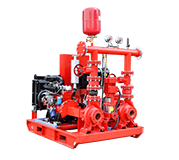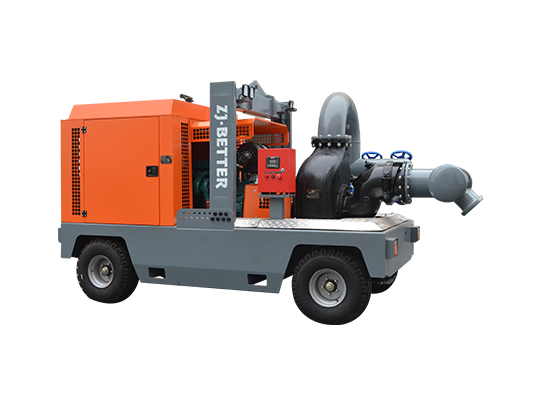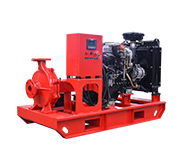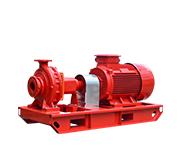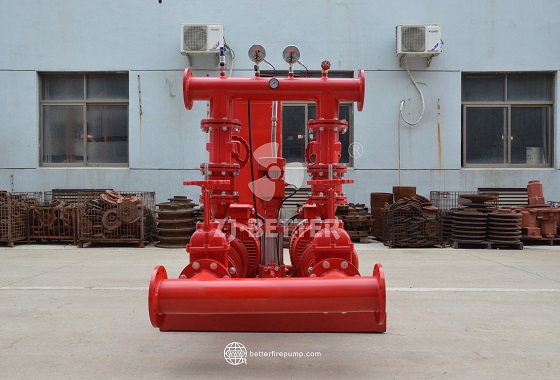1. Purpose-Built Design for Vertical Fire Protection
The twin fire pump system is engineered to address the unique challenges of high-rise buildings. As water pressure decreases with height, consistent delivery at upper levels requires a system with reliable pressure regulation. The twin configuration ensures that at least one pump is always operational, maintaining flow and pressure regardless of building height or pump maintenance. The design includes dual pump heads arranged in parallel or series, allowing for flexible operational modes and fail-safe performance under emergency conditions.
2. Advanced Control for Pressure Stability
One of the key features of the system is its precision pressure control. Equipped with intelligent controllers and pressure sensors, the system automatically adjusts pump output to meet real-time demand. During normal operation, one pump handles the load efficiently. When demand spikes—such as during fire hose activation or sprinkler discharge—the second pump activates seamlessly. This automatic alternation and load balancing minimize pressure surges, ensuring stability and protecting pipework from shock damage.
3. Energy Efficiency through Alternating Operation
High-rise buildings often operate fire pumps in standby mode, but continuous readiness consumes energy. The twin fire pump system optimizes energy use by alternating pump duty cycles. Intelligent controllers switch between pumps periodically to balance usage and reduce wear, extending the life of each unit. Variable frequency drive (VFD) options further enhance efficiency by adjusting motor speed to match actual demand, preventing overpressure and minimizing electricity consumption.
4. Built-In Redundancy for Critical Applications
Redundancy is a vital component in fire safety systems. The dual pump layout guarantees backup support in case of mechanical failure or power interruption. In installations with diesel-electric hybrid configurations, one pump may operate on grid power while the other uses diesel, ensuring functionality even during electrical outages. This failsafe design aligns with international standards such as NFPA 20 and local fire codes, making it suitable for mission-critical applications like hospitals, airports, and skyscrapers.
5. Compact Skid-Mounted Integration
Despite its dual-pump configuration, the system is compact and modular. All components, including pumps, control panels, valves, sensors, and manifolds, are mounted on a single steel skid for ease of transportation and installation. The compact footprint allows deployment in confined pump rooms often found in high-rise basements or utility floors. Skid integration also reduces on-site installation time, ensuring faster project delivery and consistent factory-assembled quality.
6. Material Durability and Corrosion Resistance
Given the exposure to varying humidity and water conditions, the twin fire pump system is constructed with corrosion-resistant materials. Pump casings are typically made from cast iron or stainless steel, while shafts and impellers use bronze or duplex stainless steel. Piping systems are hot-dip galvanized or epoxy coated to prevent internal rust. These materials significantly extend the operational lifespan of the system and reduce the need for frequent maintenance.
7. Compatibility with Fire Water Tanks and Pressurized Systems
The twin pump system is fully compatible with both gravity-fed and pressurized fire water sources. Whether connected to an overhead tank, underground reservoir, or direct mains, the suction line and priming features are designed for quick activation. Systems may also include jockey pumps or pressure-maintenance units that keep the system pressurized and eliminate response delays. This compatibility ensures quick startup during emergencies, providing instant fire suppression readiness.
8. Intelligent Monitoring and Remote Alarm Interface
To enhance fire safety management, the system includes a built-in monitoring interface. The control panel displays operational status, fault alerts, water pressure levels, and runtime statistics. Integration with building automation systems (BAS) or fire alarm systems enables remote control and automatic logging. Alarms can be transmitted to central monitoring stations or mobile devices, allowing facilities teams to take immediate action regardless of location.
9. Easy Maintenance and Accessibility
The twin fire pump system is designed for ease of inspection and maintenance. Each pump has isolation valves, allowing for independent servicing without shutting down the entire system. The control cabinet includes diagnostic functions and test buttons for system checks. Modular construction allows easy access to pump internals, electrical terminals, and gauges, reducing the time and cost associated with maintenance procedures.
10. Compliance with Global Fire Standards
The system adheres to global fire protection standards such as NFPA 20, UL/FM specifications, and local regulatory requirements. Factory testing ensures performance criteria such as flow rate, pressure, and suction lift are met or exceeded. Documentation and certifications are provided for authority approval and project handover. Compliance ensures that the system can be deployed in high-value international projects and meets insurance underwriting requirements.
The twin fire pump system provides a high-performance, energy-efficient, and reliable solution for fire protection in high-rise buildings. With advanced pressure control, built-in redundancy, intelligent monitoring, and durable materials, it addresses the critical needs of modern urban architecture. Whether for commercial towers, residential skyscrapers, or mixed-use developments, this system ensures round-the-clock fire safety and peace of mind for property owners and occupants alike.

